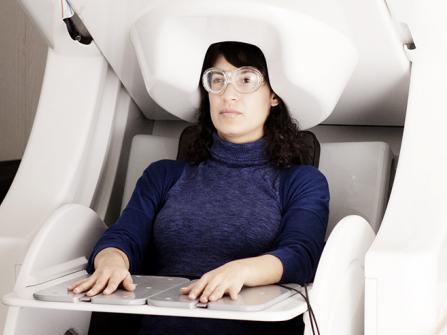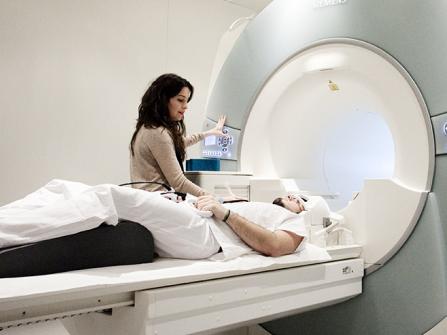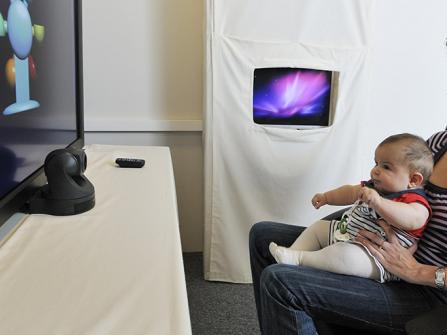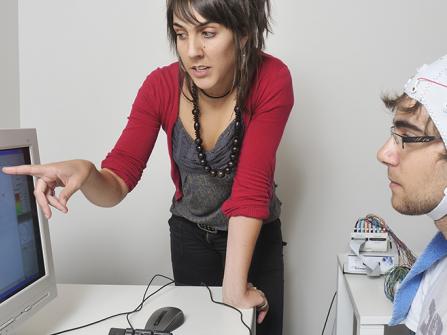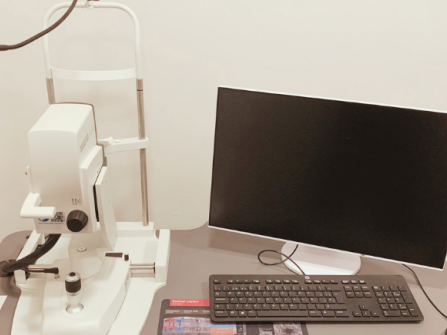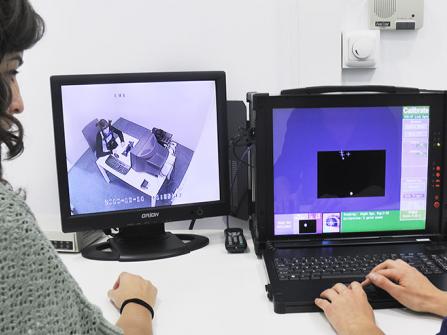 Eye tracking
Eye tracking
Our center is equipped with the hardware and software resources to carry out and analyze a wide range of experiments investigating time-sensitive reading processes and using the visual world paradigm.
Our labs have one of the latest and most complete systems for eye tracking, the EyeLink 2K (SR Research Ltd.).
The EyeLink 2K system provides an excellent sampling rate (2000 Hz) and is especially suitable for real-time data collection. It can be used for monocular as well as binocular eye tracking, and is perfectly compatible with most contact lenses and eyeglasses. This system has also a high average spatial accuracy, down to 0.15º. Many paradigms can be implemented in the EyeLink 2K, such as the visual world paradigm, the boundary technique (parafoveal previews) or silent sentence reading. The EyeLink2K system uses a remote desktop mount, thus avoids the use of cumbersome head-mounted cameras.
Because the EyeLink 2K is also portable, it enables us to conduct fieldwork at other locations outside the center, in accordance witht he special needs of test population.
What kinds of studies use this technique?
Eye tracking enables us to investigate the underlying mental processes engaged during reading as well as image and video processing tasks. It can provide precise information on time-sensitive cognitive processes such as attention, memory, problem-solving, and language.
It is particularly useful for the study of reading, as it allows us to know exactly when the reader fixates each word or linguistic constituent as well as to identify the parts of a sentence are read, and which elements require more processing time or, conversely, are ignored.
In reading research, the most relevant types of eye movements are fixations and saccadic movements (rapid movements that last between 20 and 200 milliseconds).
Usage Charges for External Non-Profit Organizations: 100€/hr. An EYETRACKING session is typically 1.5 hours, with a minimum duration of 1 hour. For-profit organizations are charged twice this price. Please contact our Lab if you would like to book an EYETRACKING session.
Eyetracking experiment
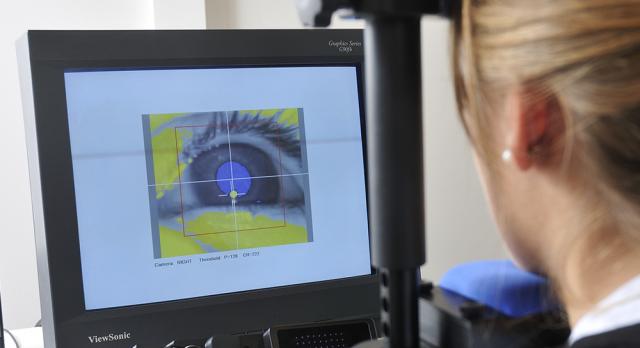
Eyetracking experiment
